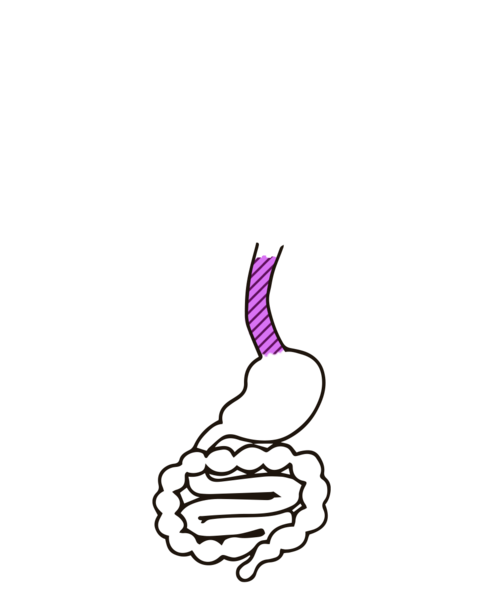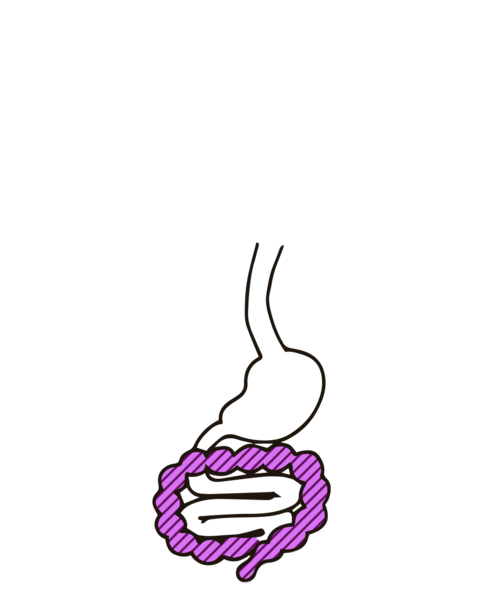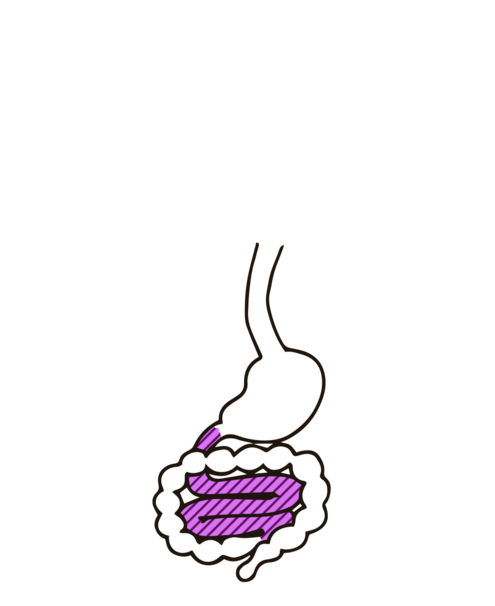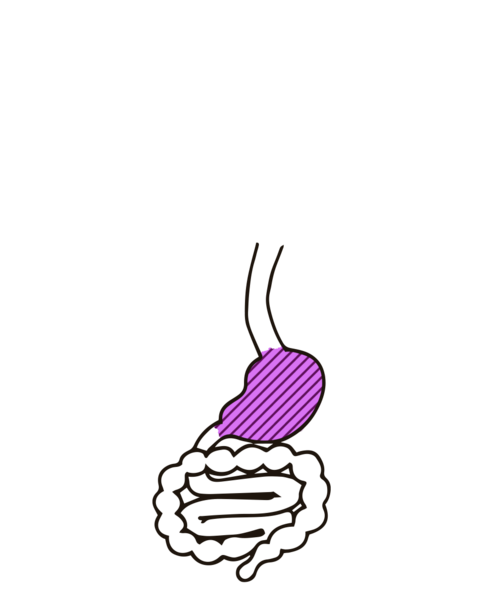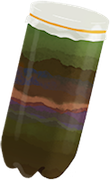
Make a Home for Microbes
How to Make a Winogradsky Column
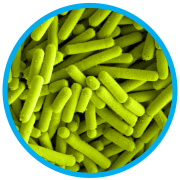
Your body is home to trillions and trillions of tiny living things called microbes, and most of them live in your digestive tract. And no wonder, it is a warm and sheltered place filled with food — a perfect spot for bacteria! But not all microbes live in the same place. Based on the habitat they're most suited for, different species of bacteria live in different parts of the tract.
A Tummy Tour
Your digestive tract contains several different organs. Each organ has its own function and its own microbes.
Click on the dots to find out more!
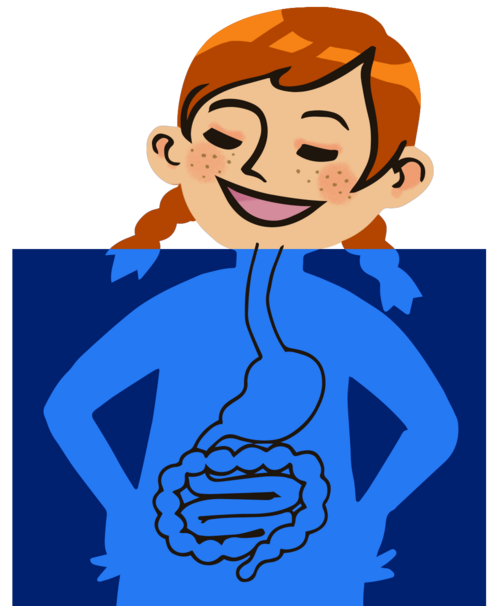
Food drops quickly from your mouth, through your esophagus, and into your stomach.
Your large intestine is where trillions of microbes ferment fiber and produce useful nutrients. Most of your body's bacteria live here.
Your small intestine is about 20 feet (6 meters) long! With the help of microbes, most food is broken down and absorbed here.
Almost no nutrients are absorbed in the stomach. It is filled with harsh acids that kill most bacteria. Only a few species live here.

The Winogradsky column was named after Sergei Winogradsky, a Russian microbiologist.
Build an ecosystem for microbes to see how they separate into their own habitats. With just a few cupfuls of mud and other simple ingredients, you can create an entire ecosystem for bacteria called a Winogradsky column. In this sealed system, microbes reuse and recycle nutrients continuously. Over time, different species separate into visible layers depending on how they use—or don't use—oxygen, light, and nutrients such as carbon or sulfur. Each bacterial species finds its habitat according to its needs—much like in your digestive tract.
How to Make Your Own Winogradsky Column
What You Need
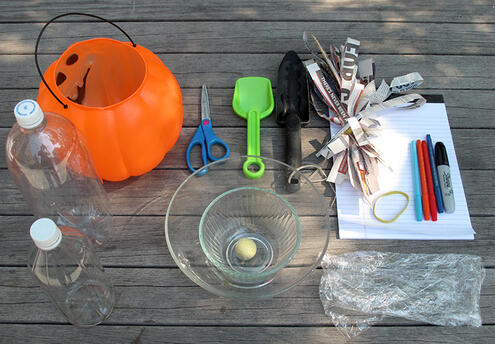
The Bottle
- a 2-liter plastic bottle
- scissors
- permanent marker
- large rubber band
- plastic wrap
- data collection notebook
- crayons, color pencils, or markers
- camera (optional)
Ingredients
- mud
- shovel and bucket (to dig and carry the mud)
- water (from the tap or your mud source)
- pitcher or small plastic bottle (to carry the water)
- spoon and 2 mixing bowls (1 large, 1 medium)
- a page of newspaper, shredded
- an egg yolk (raw or hard-boiled)
- rubber boots and old clothes that can get muddy (optional)
- gloves (optional)


What to do
Part 1: Prepare the Stuff
THE BOTTLE
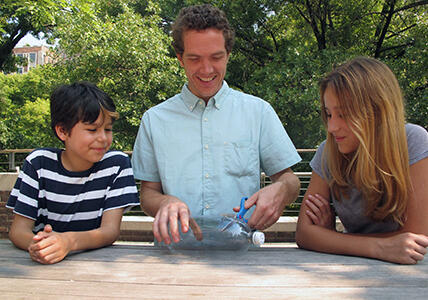
1. Carefully cut off the curved top of the plastic bottle. Ask an adult to help you.
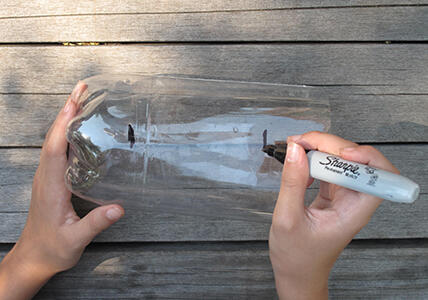
2. Draw two short lines on the bottle: one about a quarter from the bottom of the bottle, the other a quarter of the way from the top.
MUD & WATER
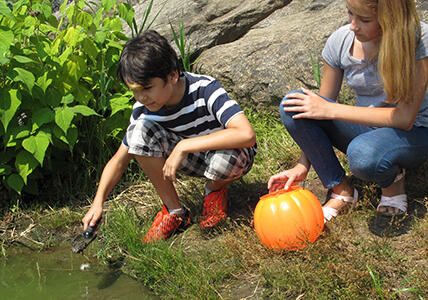
3. Dig up mud from a pond, rain puddle, or riverbed. The mud is full of microbes! Fill your bucket with enough mud to fill the plastic bottle.
4. Remove rocks, twigs, or other solid matter from mud. Be careful of broken glass.
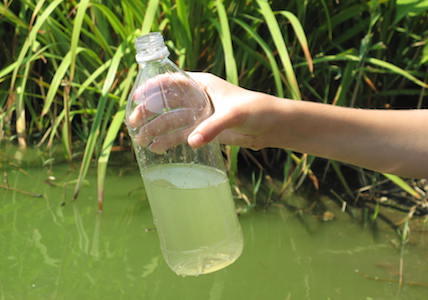
5. Collect water from the mud source (or use tap water).
NEWSPAPER & EGG
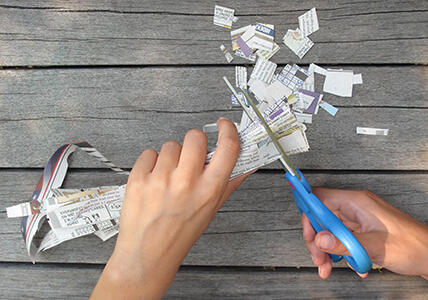
6. Cut a sheet of newspaper into thin strips. Then, cut the strips into tiny rectangles. These will provide carbon for the microbes in the mud.
7. If using a hard-boiled egg, ask an adult to help you cook it. The yolk will provide sulfur for the microbes in the mud.
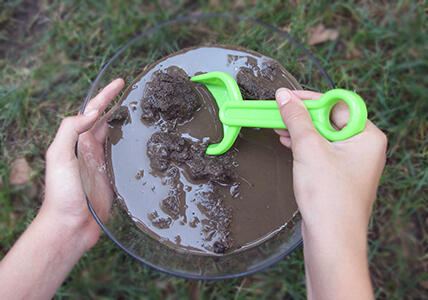
8. Put enough mud into the large mixing bowl to fill three-quarters of the bottle. Add water and stir until mud is the consistency of a milkshake.
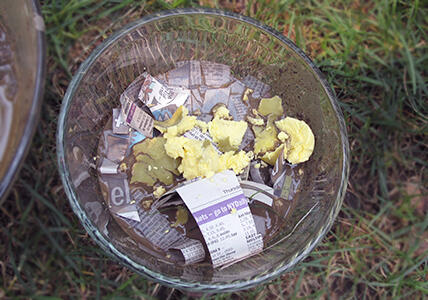
9. Transfer about one-fourth of the mud-shake into the medium mixing bowl. Stir in a handful of shredded newspaper and add the egg yolk.
Part 2: Make the Ecosystem
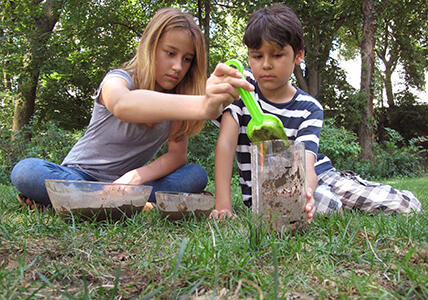
10. Spoon the egg yolk and newspaper mud mixture into the plastic bottle until it's about a quarter of the way from the bottom (stop at the line). Once in a while, gently tap the bottle on on a hard surface to remove air pockets as the mud settles to the bottom.
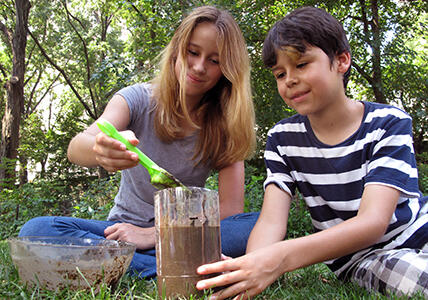
11. Spoon the regular mud mixture into the bottle until it's about a quarter of the way from the top (stop at the line). Gently tap the bottle on the table to remove air pockets.
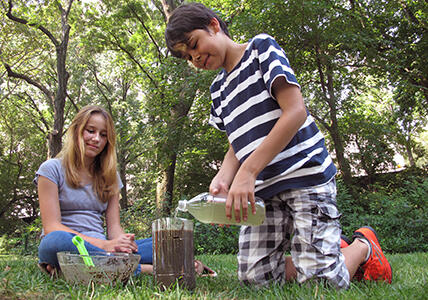
12. Top with a little bit of water, leaving about an inch of air at the top.
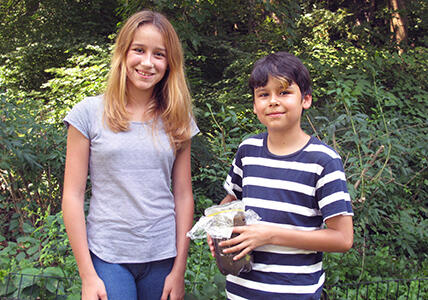
13. Cover the bottle with plastic wrap and secure it with a rubber band.
14. Place your column in a brightly lit place.
Part 3: Track the Microbes' Movement
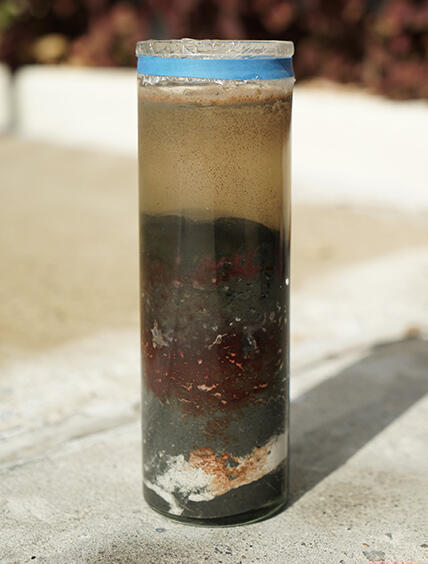
15. Over the next eight to ten weeks, watch for various color layers to form as microbes separate into their habitats.
16. At least once a week, on the same day at the same time, write down and draw any changes you see, including colors, the movement or thickening of sediment, and any differences between the side facing the light and the once facing away. You can also take photos for comparison. Note the day and time the photo was taken.
Part 4: Identify the Microbes
17. Just as no two people's gut microbes are exactly the same, no two Winogradsky columns are the same. Depending on the microbes present and the amount of nutrients available, many different layers may form.
Check out some common microbes that might grow in your column. Does yours include any of them?
Click on the dots to reveal what it's like inside the Winogradsky column, and where certain microbes live.
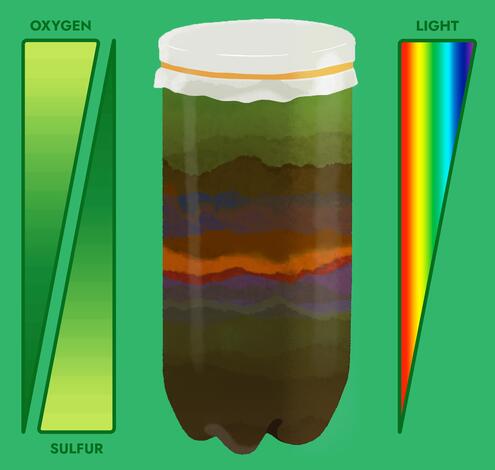
Oxygen levels are highest at the top of the column. Microbes that that grow here use oxygen and not sulfur.
Some microbes use different wavelengths of visible light to make food. The first changes you see might be green or purple spots on the side of the column facing the light source. These spots are photosynthetic microbes. If there is too much light or not enough light, these microbes will not grow.
Sulfur levels are highest at the bottom of the column. Microbes that grow here can survive without oxygen and instead use sulfur.
BLACK
Sulfur-reducing bacteria
Sulfur levels are highest near the bottom. Here, sulfate-reducing bacteria that cannot tolerate oxygen use the egg yolk. This process releases hydrogen sulfide, which, not surprisingly, smells like rotten eggs!
PURPLE AND DARK GREEN
Sulfur bacteria
A little lower, purple and green sulfur bacteria use light, carbon, and hydrogen.
PURPLE, BROWN, ORANGE, RED
Non-sulfur bacteria
In the mud in the middle, purple non-sulfur bacteria get energy from sunlight and carbon. They convert carbon-rich plant materials, like newspapers, into carbon dioxide.
GREEN
Cyanobacteria
Oxygen levels are highest near the top. Here, cyanobacteria use sunlight, carbon, and hydrogen to produce energy while giving off oxygen.
Experiment with More Winogradsky Columns!
Want to see how varying nutrients and sunlight will affect the microbe layers? Create more columns with these different conditions and compare the results.
Vary the Nutrients
- same amount of sunlight
- same source of microbes

COLUMN 1
egg yolk + newspaper

COLUMN 2
newspaper only
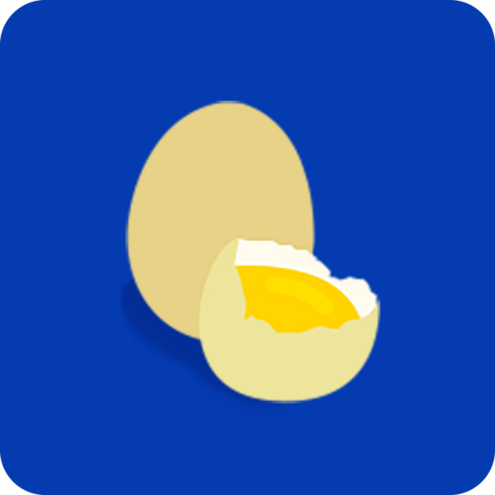
COLUMN 3
egg yolk only


Vary the Amount of Sunlight
- same nutrients (egg yolk + newspaper)
- same source of microbes
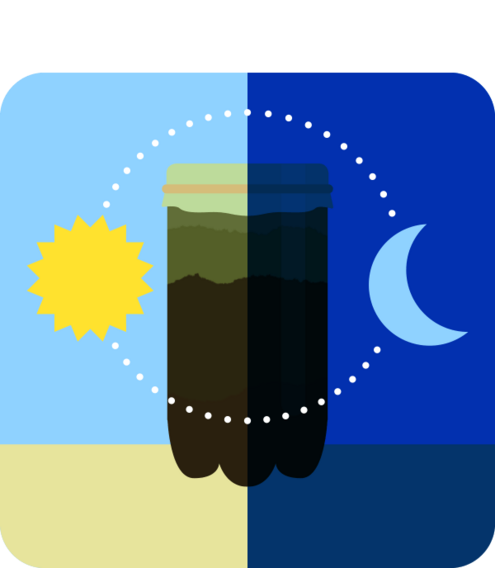
COLUMN 1
place the column in a brightly lit place, so it experiences both day and night cycles
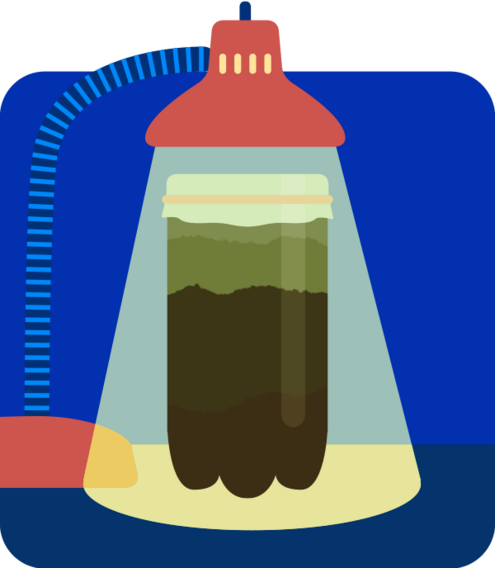
COLUMN 2
place the column under a desk lamp all day and all night
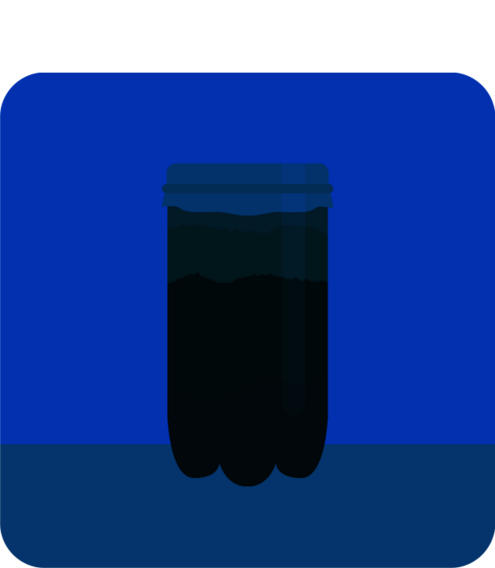
COLUMN 3
place the column in a dark place, like a closet, so it does not experience light


Vary the Source of Microbes
- same amount of sunlight
- same nutrients (egg yolk + newspaper)

COLUMN 1
place the column in a brightly lit place, so it experiences both day and night cycles

COLUMN 2
a different source of mud, sand, or soil

COLUMN 3
a third source of mud, sand, or soil
Image Credits:
Illustrations: © Liz Vernon/AMNH, Photos: L. Johnsonii, courtesy of Kathryn Cross/Institute of Food Research; Sergei Winogradsky, Public Domain via Wikimedia Commons; Materials and steps, © AMNH




 Biodiversity
Biodiversity
 Brain
Brain
 Genetics
Genetics
 Marine BiOLogy
Marine BiOLogy
 MicrobiOLogy
MicrobiOLogy
 PaleontOLogy
PaleontOLogy
 ZoOLogy
ZoOLogy
 AnthropOLogy
AnthropOLogy
 ArchaeOLogy
ArchaeOLogy
 Astronomy
Astronomy
 Climate Change
Climate Change
 Earth
Earth
 Physics
Physics
 Water
Water

